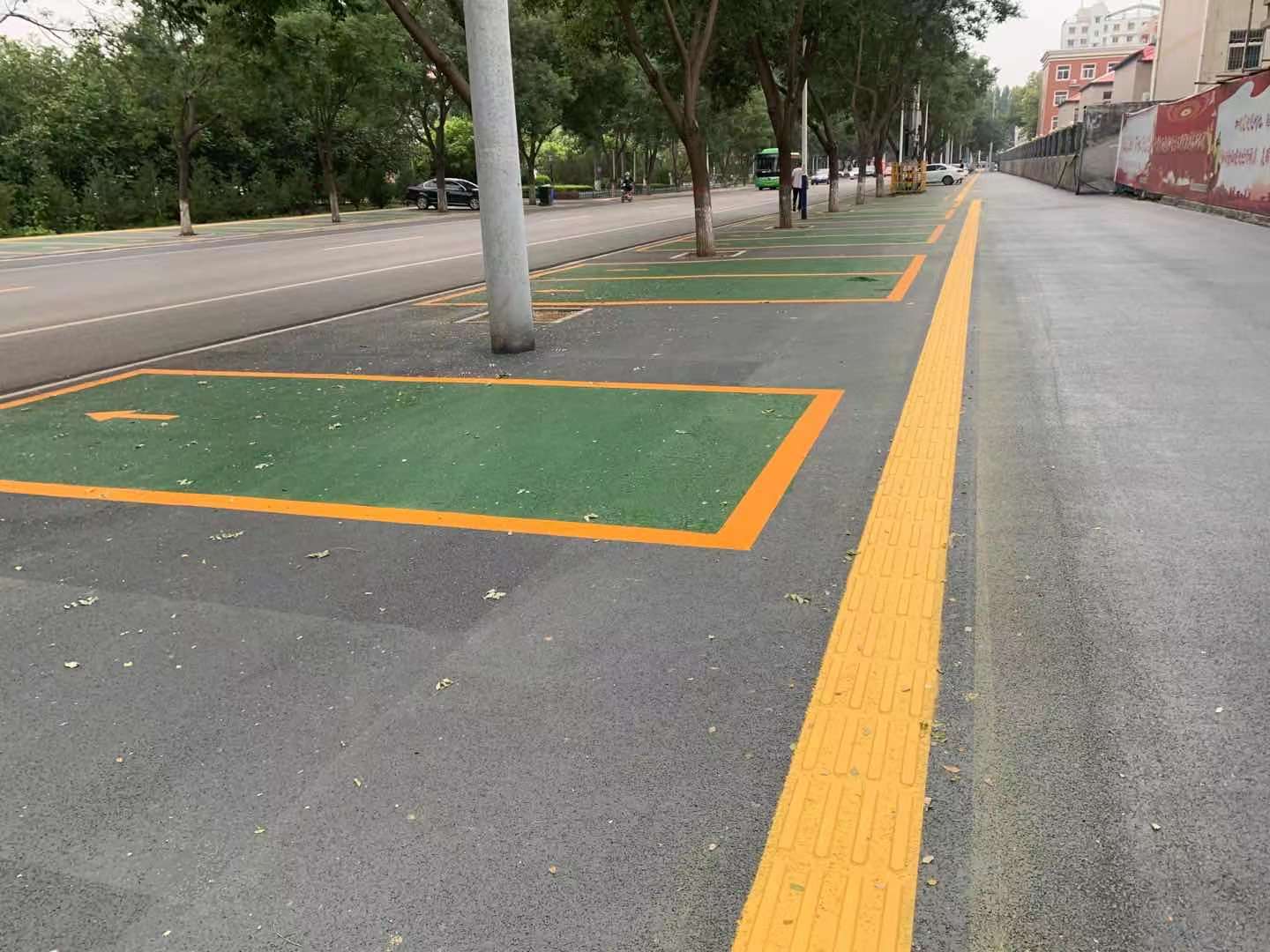Construction Scheme for Polymer Cast-in-Place Tactile Paving for Visually Impaired
In the realm of urban accessibility enhancements, polymer cast-in-place tactile paving for visually impaired individuals represents a significant stride towards creating inclusive and safe pedestrian environments. This innovative paving solution integrates seamless tactile cues into pathways, providing vital navigational assistance to those with visual impairments. Below is a comprehensive construction scheme outlining the steps involved in installing polymer cast-in-place tactile paving.

1. Preliminary Preparation
1.1 Site Survey and Planning
- Conduct a thorough site survey to map out the areas requiring tactile paving.
- Identify potential obstacles, utility lines, and drainage systems to avoid during construction.
- Plan the layout of tactile patterns, ensuring they align with the natural flow of pedestrian traffic and comply with local accessibility standards.
1.2 Surface Preparation
- Clean the existing surface thoroughly, removing any debris, oil, grease, or loose materials.
- Ensure the surface is dry and free of any contamination that could interfere with the bonding process.
- Prepare the surface for bonding by roughening it if necessary, using mechanical or chemical methods to improve adhesion.
2. Material Preparation
2.1 Polymer Mixture Preparation
- Mix the polymer resin and aggregates according to the manufacturer's instructions.
- Add any necessary additives to enhance the mixture's durability, color, or other desired properties.
- Ensure proper mixing to achieve a homogeneous consistency.
2.2 Tactile Pattern Templates
- Prepare templates for the tactile patterns (typically diamond-shaped) ensuring they are accurately sized and spaced.
- These templates will guide the application of the polymer mixture to create the desired tactile cues.
3. Application Process
3.1 Trowel Application
- Using a trowel or similar tool, apply the polymer mixture onto the prepared surface, following the layout plans and templates.
- Ensure an even thickness of the mixture, maintaining consistency across the entire paved area.
3.2 Pattern Formation
- After applying the mixture, use templates to create the tactile patterns by indenting or shaping the still-wet material.
- Ensure that patterns are evenly spaced and clearly defined.
3.3 Leveling and Compaction
- Use a leveling tool to smooth out any irregularities and ensure a uniform surface.
- Compact the material lightly to prevent air pockets and ensure good bonding with the underlying surface.
4. Curing and Finishing
4.1 Curing
- Allow the polymer mixture to cure according to the manufacturer's instructions. This may involve leaving it to dry naturally or using heat to accelerate the process.
- During this time, keep the area protected from foot traffic, water, and other contaminants.
4.2 Final Inspections and Adjustments
- Once cured, conduct a final inspection to ensure that the tactile patterns are clearly defined and free of defects.
- Make any necessary adjustments or repairs to maintain uniformity and functionality.
5. Post-Installation Procedures
5.1 Cleaning and Maintenance
- Regularly clean the tactile paving to remove dirt, debris, and any substances that could impair its functionality.
- Inspect the paving periodically for signs of wear or damage and make repairs as needed.
5.2 Signage and Awareness
- Install signage around the tactile paving to inform visually impaired individuals of its presence and purpose.
- Promote awareness among the general public about the importance of respecting and using tactile paving correctly.
Conclusion
The installation of polymer cast-in-place tactile paving for visually impaired individuals is a meticulous process requiring careful planning, precision in execution, and ongoing maintenance. By adhering to this comprehensive construction scheme, urban planners and contractors can create safe, navigable pathways that significantly enhance the mobility and independence of visually impaired residents. This, in turn, fosters a more inclusive and accessible urban environment for all.





 Chinese brand Kunjie Materials Company is an environmentally friendly enterprise that provides colored anti-skid pavement, ceramic particle anti-skid pavement, water-based polymer colored pavement, pe...
Chinese brand Kunjie Materials Company is an environmentally friendly enterprise that provides colored anti-skid pavement, ceramic particle anti-skid pavement, water-based polymer colored pavement, pe...